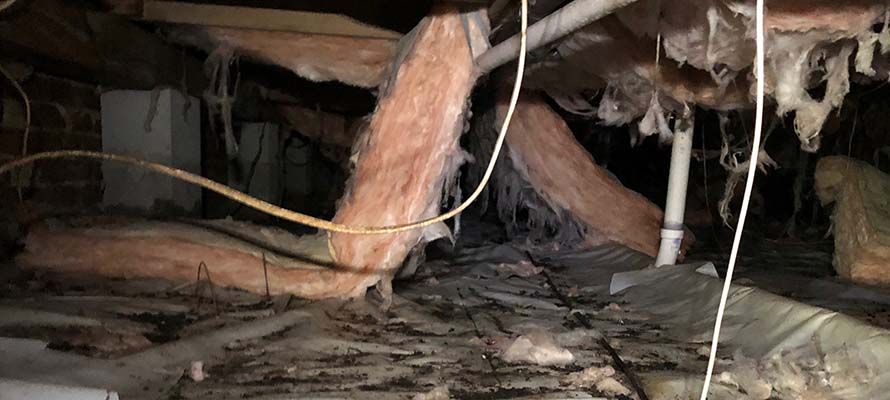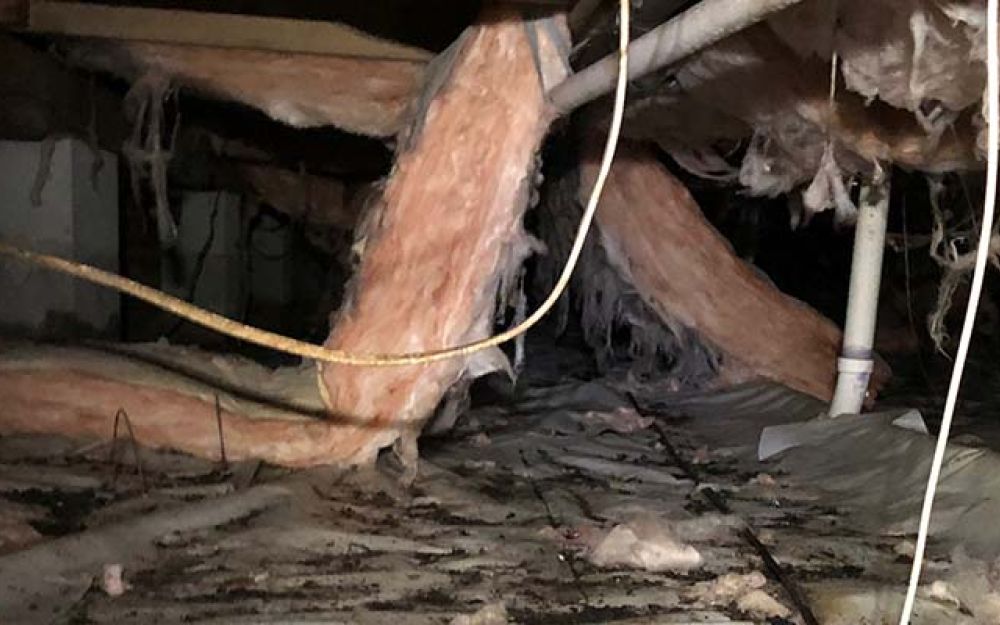9 Tips for Getting Water Out of Your Crawl Space



When your crawl space has water coming in, you need to act quickly. Crawl space water removal isn’t an easy task, but ignoring it is just going to lead to further problems, including mold growth and structural damage. But many of us aren’t quite sure how to take care of the problem.
So, if you’re finding water and moisture in your crawl space, read on. We’ll show you what you need to do to prevent further damage.
For help getting water out of your crawl space in the greater Hampton Roads, VA / NC region, learn more about BAY Crawl Space & Foundation Repair at our Home Page, About Us Page, or Request A Quote Page.
1. Find the Problem
The first thing you’ll need to do is find the problem that’s allowing water to enter the area under your home.
The most common causes are cracks in the siding of the home or leaking pipes. The areas around toilets are particularly prone to allowing water to enter the undercarriage of your home.
If there are serious amounts of water it’s not going to do you any good to start trying to remove the water before the problem has been solved.
2. Get Your Hands on a Submersible Pump
If there’s standing water, then you’ll need to find a pump of some sort to remove the water. Submersible pumps can be found easily, whether you need to buy or rent one, and will help you make short work of the water under your home.
Only serious cases of flooding will require the use of a pump, but when they’re needed there’s really no other option.
While a professional is probably the better option in the case of large amounts of standing water you’ll want to remove any vapor barrier which has been placed and dig a three to four-inch trench around the outside of the crawlspace.
Place the pump in the impromptu moat and use the pump there.
3. Use a Wet/Dry Vaccum to Remove Standing Water
A wet/dry vacuum is the usual course of action for removing water from under the home. They’re a versatile tool, and you can stick them directly in the water so that it gets sucked up and removed.
You’ll want to suck up as much of the water as possible.
Hopefully, you have a vapor barrier down there or you’re going to end up sucking up dirt as well, but the important thing is to remove as much of the water as possible as soon as the initial problem has been found.
4. Dehumidify the Space
Even humidity can cause serious problems with rot or fungus. The last thing you need is for your subflooring to begin to rot, so using a dehumidifier under the home is the best way to go about things.
For the best results, it’s recommended to install a permanent crawl space dehumidifier and seal the foundation vents. They’re fairly easy to operate. It’s a specialized task and should be properly installed.
5. Remove Contaminated Items
If there is anything in the crawl space that’s been wetted down, it will need to be removed.
This is doubly important if the spill was sewage-related. Don’t expose yourself to the contamination, but removing any items that were wetted with blackwater and placing them in plastic bags for later disposal needs to be done before you can begin working on it.
Even regular water spills from rain or a leaking water pipe are likely to have mildew or mold on them and most will have to be disposed of.
6. Decontaminate Sewage Spills
Blackwater is a serious problem. If the initial leak was coming through sewer piping, then you’ve got a lot more work on your hands.
If you don’t have a vapor barrier in place, then the top few inches of the soil will be contaminated and can pose a serious health risk to the occupants of the home. Don’t let the soil stay.
You’ll need to dig up at least two to three inches of the topsoil to remove it. If you insist on doing it yourself then make sure that you’re using proper PPE for biological hazards.
That typically means at least gloves, an eye mask, a respirator, and some form of Tyvek to keep your clothing from getting contaminated.
You’ll also need to rig up some form of sled or wagon so that you can move around and remove buckets of soil from underneath the home without laying directly in it.
You’ll also need to decontaminate any wooden surfaces which have been wetted down with bleach.
7. Put It Back Together
If you’ve had to remove a vapor barrier, then you’ll want to make sure that you replace it once it’s been removed. Make sure to keep it tight and that you’re careful to cover 100 percent of the topsoil to prevent condensation problems.
If you remove any dirt, you’ll also want to replace it and level the surface before you’re done.
Putting everything back together can be a pain, but it’s a necessary part of the process and you should do it as soon as you’re able.
8. Hire a Professional
As you can see, removing water from a crawl space is no small task. There’s a reason why most people opt to use a professional service if the area under their home ends up flooded.
In the case of small spills caught early, you may be able to get away with just a wet/dry vacuum but the cost and time investment are rather prohibitive for most people. Even if you have the skills to pull it off it’s generally not worth the effort.
9. Install a Permanent Solution
Options are available to install water management solutions that can permanently fix your water problems for the long term. With a properly installed french drain and sump pump system, you can enjoy peace of mind that your crawl space will not flood when the next big rain comes.
Call Us for Crawl Space Water Removal
Crawl space water removal is an involved task and requires a lot of equipment that most people don’t have lying around the home. You can do it yourself, but it’s not always the best option.
If you’re having trouble with water underneath the home it might be time to bring in someone with the experience and equipment to make it happen.
Get Your Free Estimate Now

